‘Due to the weather, the boat back has been cancelled.’
These are not the words you want to hear when staying on Alderney, the northernmost of the inhabited Channel Islands, if you have a dry shipper full of marine specimens, flash frozen at –160°C, ready for whole genome sequencing. However, that was the situation we found ourselves in when sampling marine invertebrates for the Darwin Tree of Life (DToL) Project in late 2024.
DToL aims to sequence the genomes of 70,000 species of eukaryotic organisms in Britain and Ireland, including Crown Dependencies. It is affiliated with the Earth Biogenome Project with the aim to sequence all complex life on earth. Eukaryotes are organisms with cells that have a membrane-bound nucleus and probably make up the most famous groups of living things, from animals and plants all the way to fungi and seaweeds. There are approximately 75,000 eukaryotic species in the UK—the number keeps changing based on the fluid scientific definition of what a species is (ask five systematic scientists and they will give you five different answers).
The key difference between the DToL and other large biodiversity monitoring initiatives is that whole genome data is generated. Unlike DNA barcoding (another sequencing technique that analyses shorter strands of DNA within a genome) the whole genome is everything. Understanding the whole genome means you have access to the entirety of an organism’s makeup. It is an incredible tool that allows scientists to do all kinds of analysis, including measuring changing genes over time, or even attempting to answer the dreaded question ‘what is a species’?
The difficultly around sampling for whole genome sequencing is that DNA degrades extremely quickly. Before the natural process of decomposition gets to the cells and tissue, the DNA must be preserved in its best possible form. Currently, this involves flash freezing at extremely low temperatures, between –160 and –80°C (depending on the technology used). In theory, DNA can be stored for hundreds of years in this way, and some museums—like the Natural History Museum (NHM) in London—already have liquid nitrogen freezers that go down to –250°C.
Combining these methods with fieldwork has its challenges, and this is especially the case with marine material. Marine invertebrates have all the undesirable traits when it comes to preserving specimens for long-term storage—they are usually small and squishy and can change colour and form once they are out of the water. Marine organisms can also be extremely hard to identify to species in the field. All the organisms included in the DToL target list can require years, if not decades, of expertise to extract and name.
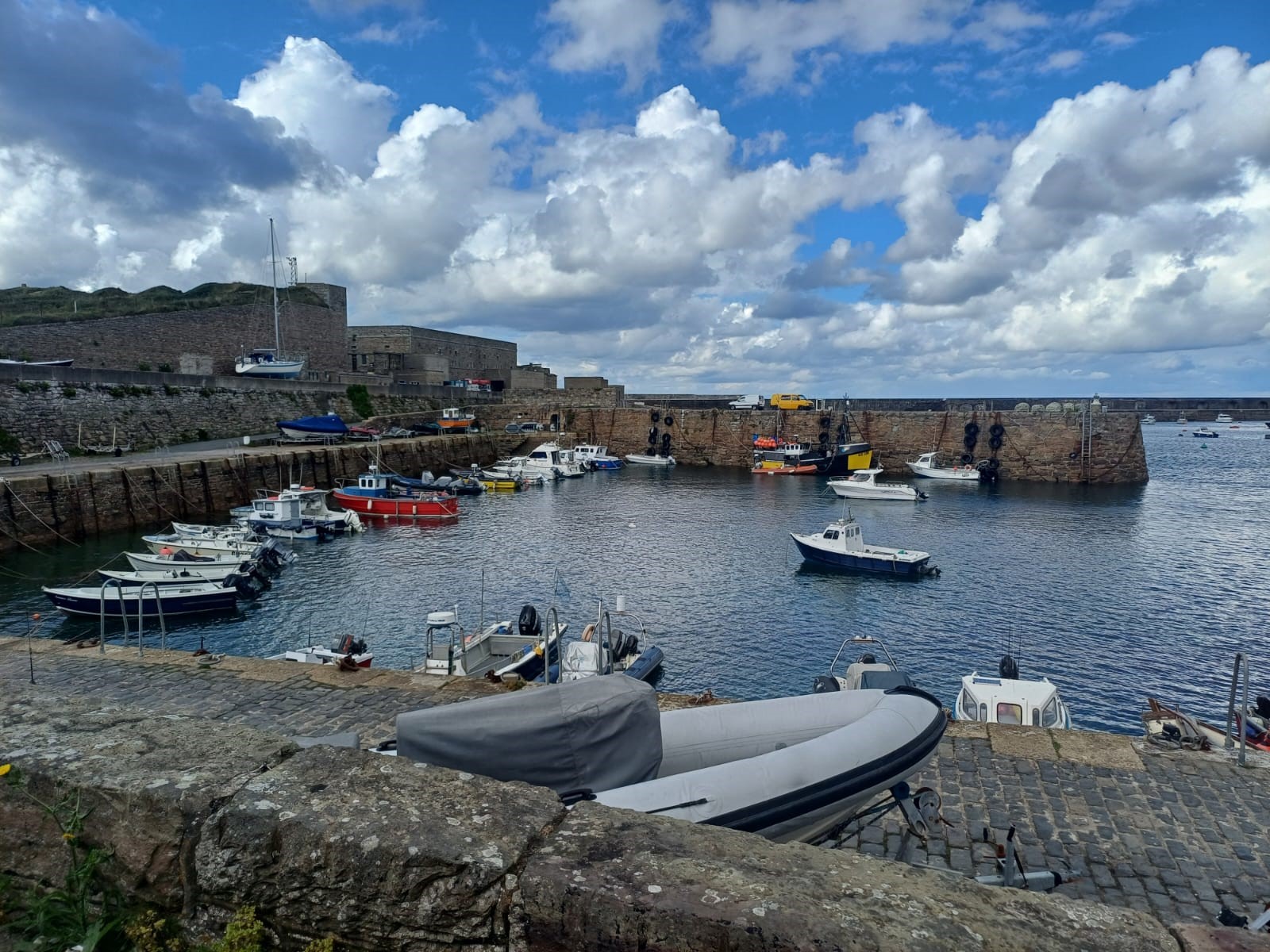
Alderney harbour. © Inez Januszczak.
Thankfully, in Alderney, the NHM DToL Sampling Team (me and Senior Research Assistant Chris Fletcher) was accompanied by a team of experts including Patrick Adkins, Rebekka Uhl, and Belle Heaton from the Marine Biological Association. This field trip to Alderney was organized by the Porcupine Marine Natural History Society (PMNHS), an expansive natural history society set up in 1977, which seemed to number among its membership the entire Seasearch Guides’ authorship. Along with the local expertise of the Alderney Wildlife Trust and their volunteers, there was an army of scientists ready to record, monitor, and observe the available wildlife.
We had 7 days to scour the coasts of Alderney for marine material which could be identified and flash frozen live, then taken back to the NHM for processing. For this, we used dry shippers: small containers originally designed to transport frozen eggs and sperm for IVF (in-vitro fertilization). They can be ‘charged’ with liquid nitrogen prior to being moved and can keep at –160°C for up to a week. One issue is that they are extremely sensitive and can drop temperature at any point. The PMNHS’ decision to hire a boat to take us from Poole Harbour direct to Alderney was a wise one, especially given the time constraints.
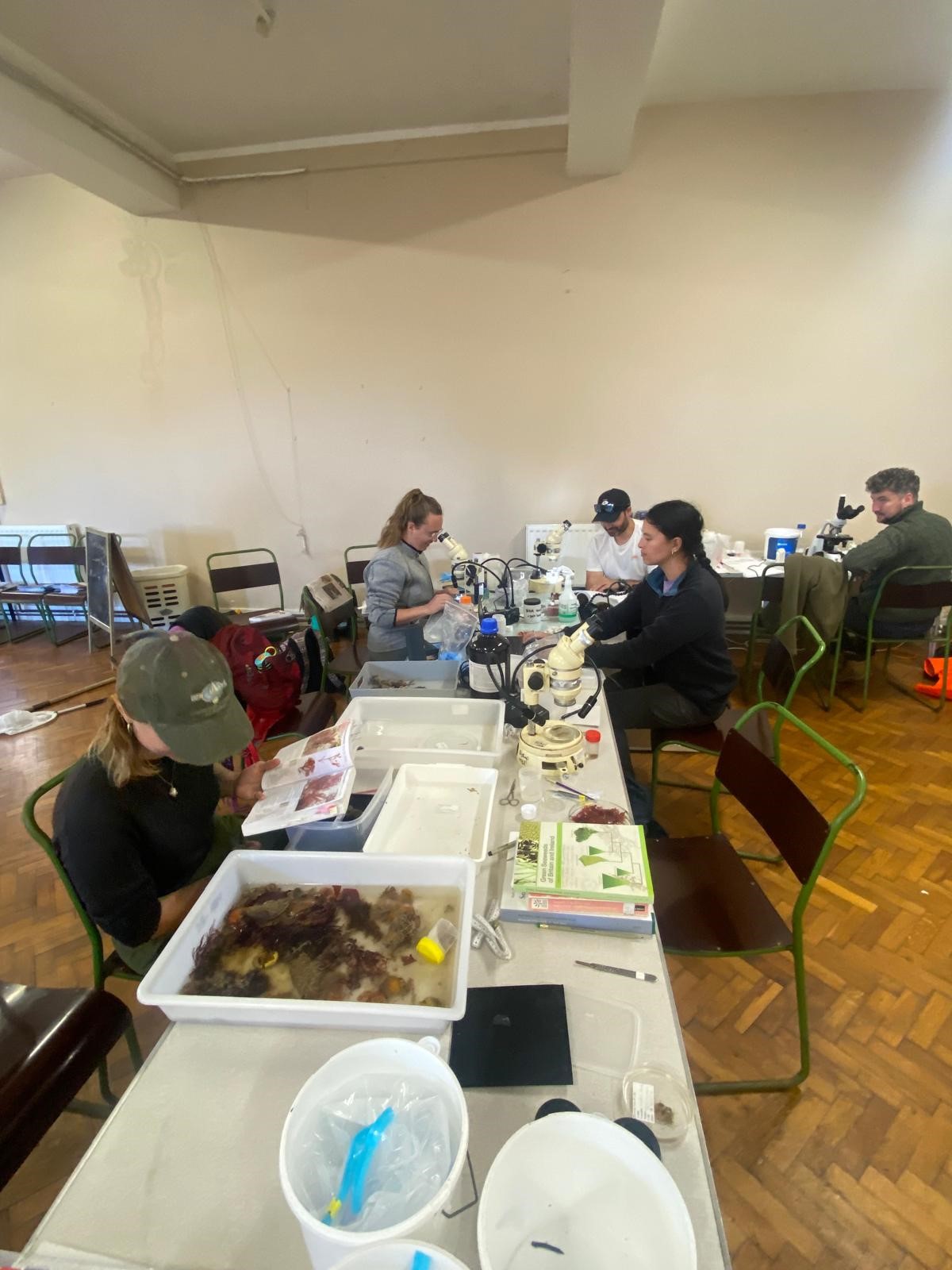
In the church lab. © Iain Dixon.
After setting up a mock-up lab in the church hall, every day was spent looking for unique species for the project. Specimens had to be identified, cleaned, then flash frozen. Only a small amount of tissue is needed, and DToL has an extensive tracking system to prevent sampling duplication.
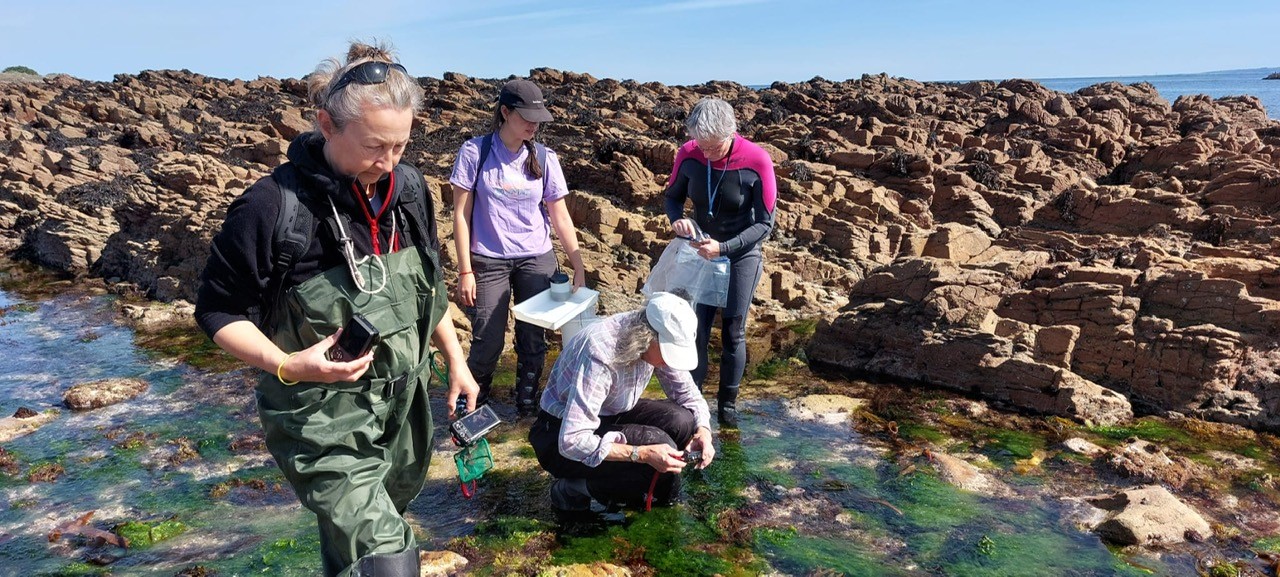
Inez Januszcak and PMNH members sampling rockpools. © Charlotte Cumming.
By day 7, we had collected 87 specimens and 65 species for DToL—29 of which had never been collected by the project before. Alderney was an incredible place to sample—I had never been anywhere so steeped in not only wildlife, but a dark and fascinating history, with WWII bunkers rising up in the landscape beyond the cliffs and creeks. We celebrated our final day with fish and chips by the harbour, ready for our boat back.
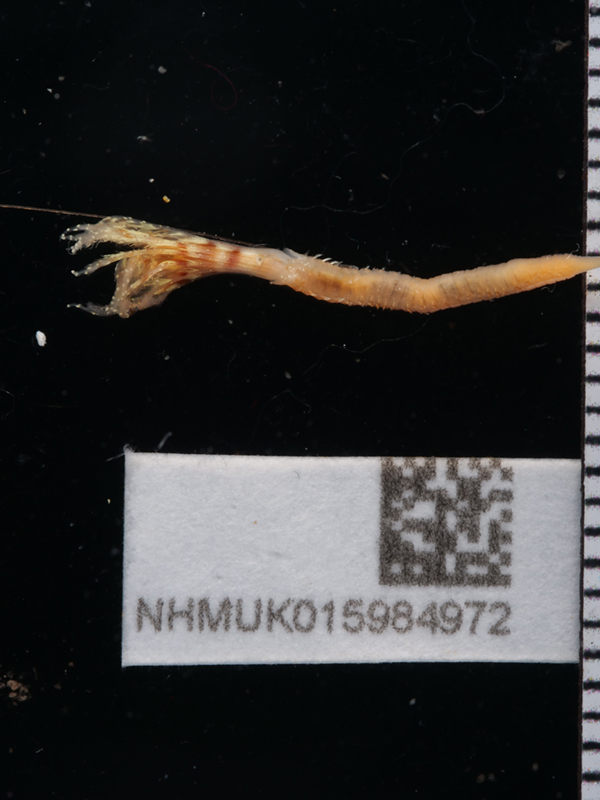
A fan worm, Parasabella langerhansi, sampled for the Darwin Tree of Life project. © Chris Fletcher.
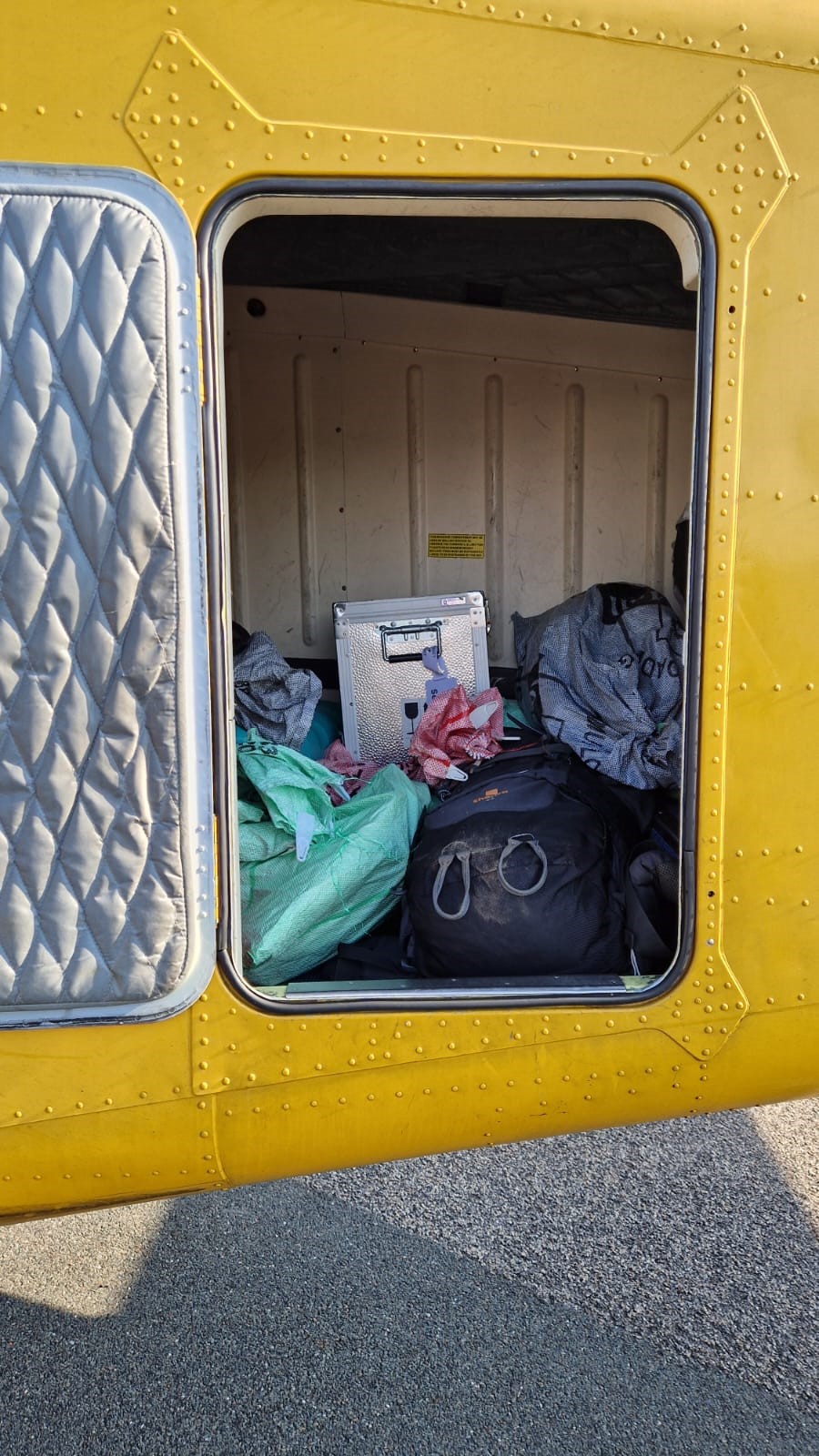
Dry shipper on the plane to Guernsey. © Chris Fletcher.
But that was not to happen. Extreme tides meant the direct boat back to Poole was cancelled, and there wouldn’t be another trip for 2 days. Chris and I, hyper-aware of the dry shipper freezing capacity, decided to get a plane to Guernsey, stay in a hotel and then ferry back to Poole, where we would catch a train back to London. Finding out that the Guernsey to Poole ferry was affectionately known as ‘the vomit comet’ was another unwanted surprise.
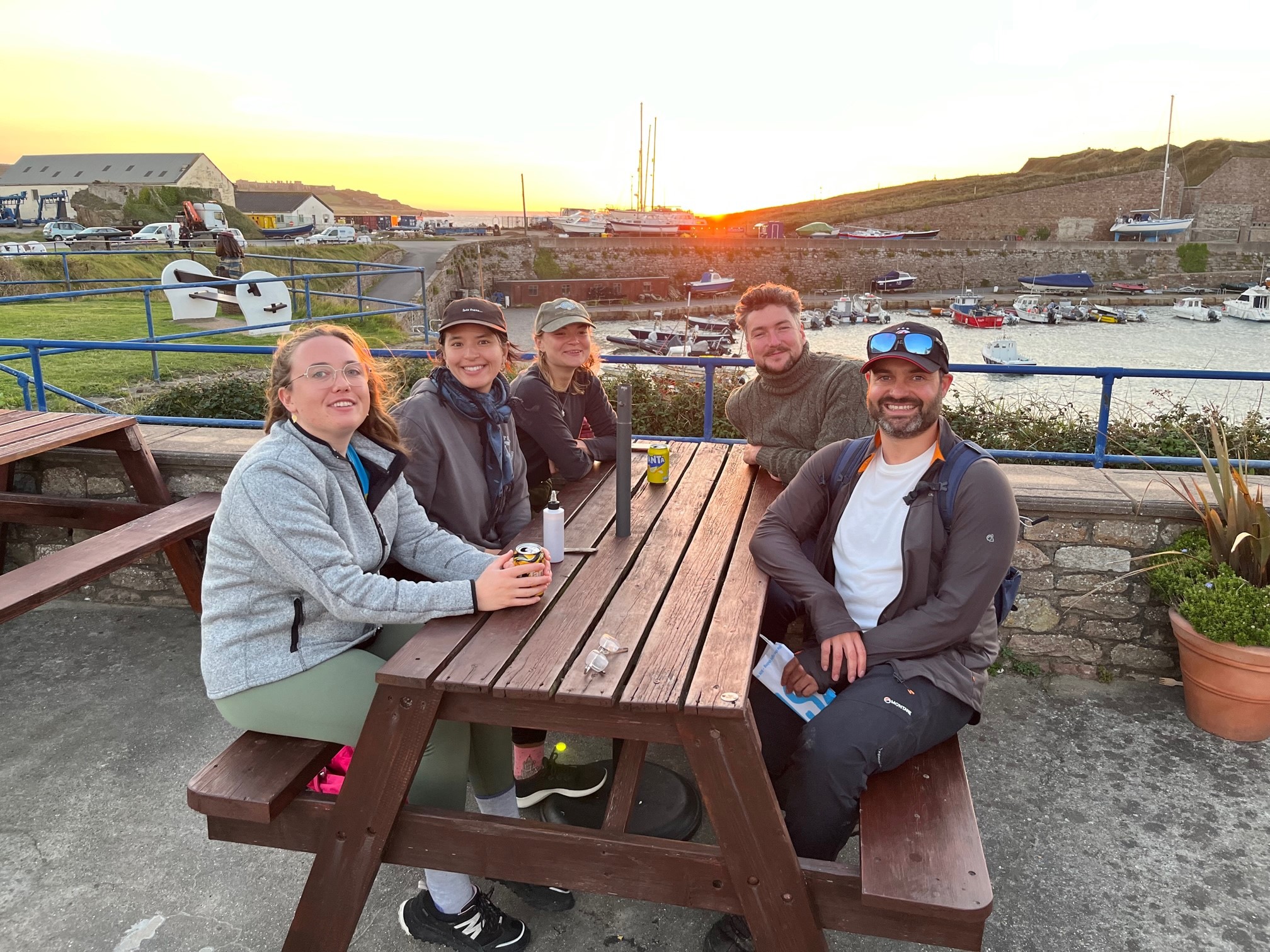
Belle, Inez, Rebekka, Patrick and Chris having a final fish and chip supper by the harbour.
Two days later, back at the museum, the relief was indescribable when we opened the dry shipper lid to find it was still at –160, despite being days over its usual freezing capacity. This was the first time specimens have been frozen on Alderney and brought back to the museum in this way. They are now at the Wellcome Sanger Institute, where the human genome was first generated in 2003. Back then, generating a whole genome cost $3 billion and took 13 years. Now we can do the same, but across all organisms, for a fraction of the time and cost. All this data is publicly generated and free. Hopefully, like the bunkers on Alderney Island, these genomes represent a snapshot in time that can be studied for many years in the future.
Inez Januszczak (inez.januszczak@nhm.ac.uk), Sampling Coordinator for the Darwin Tree of Life Project (Natural History Museum).
www.researchgate.net/profile/Inez-Januszczak
Large-scale sampling projects rely entirely on the knowledge of taxonomists, ecologists, and other experts. Marine invertebrates are still understudied compared to other (usually terrestrial) taxonomic groups. Thank you to everyone who collected, identified, and took part in this trip.
Further reading
Alderney Wildlife Trust: www.alderneywildlife.org
Earth Biogenome Project: www.earthbiogenome.org
Darwin Tree of Life project: www.darwintreeoflife.org
Porcupine Marine Natural History Society page: pmnhs.co.uk
